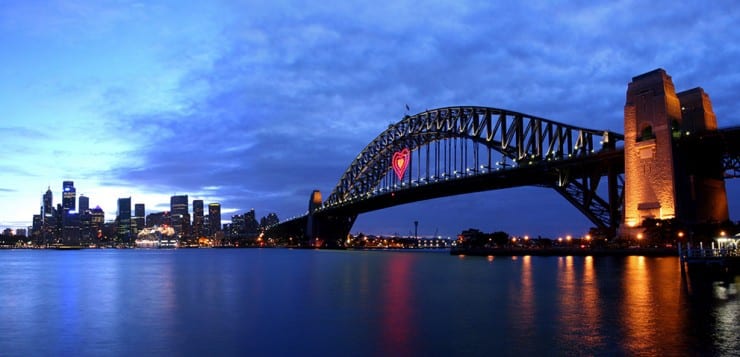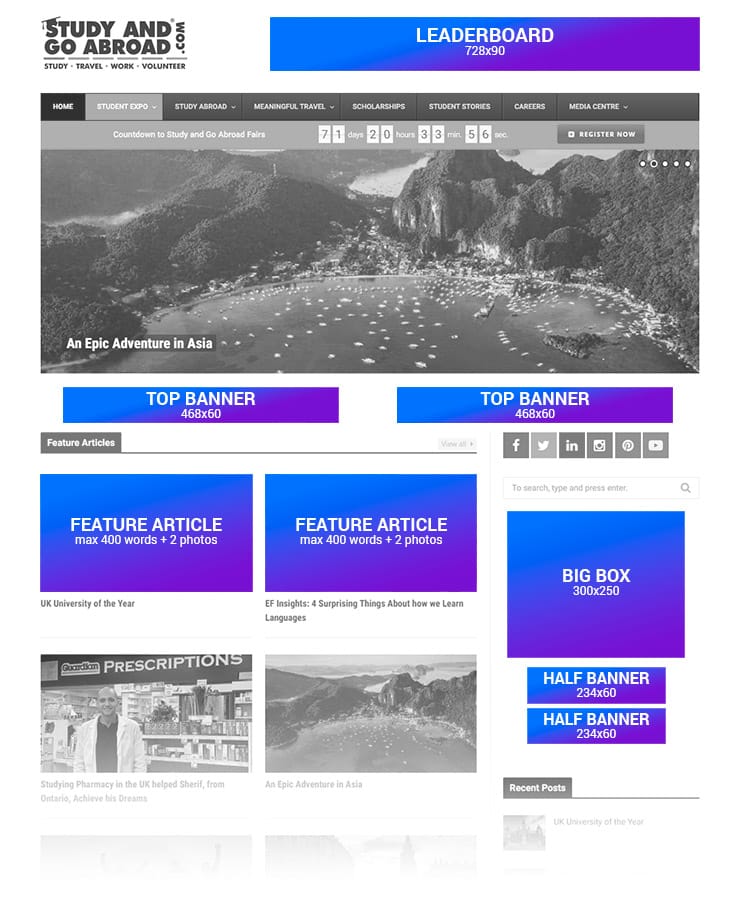Australia offers the world no shortage of vivid images of its stunning natural beauty and unique culture: red desert landscapes; kangaroos, koalas and crocodiles; white-sand beaches; the abstract strokes of Aboriginal art; shimmering blues of the Great Barrier Reef; and the unmistakable shell-within-shell silhouette of the Sydney Opera House. Together they paint an exquisite picture of this unique continent known as the “Land Down Under,” a place of 20 million people that is roughly the same in land mass as the United States.
However, there is even more to discover when one moves beyond Australia’s alluring face to explore what lies within the country’s head and heart.
Within Australian commerce, education, and everyday life, one finds a country that is innovative and cooperative in research; a global leader in areas of medicine, agriculture and environmental sustainability; and diverse culture of people, languages, art and cuisine. This variety is in large part because of Australia’s mix of Aboriginal roots, influx of foreign immigrants, and close proximity to Asia.
For students considering studying or earning a degree abroad, contemporary Australia is one of the great options available in international education. With months instead of days to explore, students soon discover Australia is more culturally diverse, complex and educationally enriching than travel brochures or wildlife programs can even begin to convey.
Underpinning modern Australia is a world-class higher education system of 39 universities, all of which are required by the Australian government to maintain high standards. The Australian university system attracts students from more than 90 countries, including 4,412 students from Canada in 2007. “Interestingly, that statistic has grown from 2,360 in 2002,” explains John Hayton, Director of Australian Education International, North America, the international arm of the Australian Education Department. “Essentially over six years, it’s almost doubled.”
Alison O’Hearn, a 26-year-old Dalhousie University graduate from Halifax, Nova Scotia, is one of those students. After graduating with a degree in neuroscience and history, O’Hearn in January 2007 boarded a plane for Australia to begin four years of medical school. Like many students, she knew little more about the country than what she’d seen on the “Crocodile Hunter” television series.
“I was expecting it to be hot all of the time and to see spiders, snakes and koalas at every turn,” O’Hearn says. “I’ve been living here for a year and a half, and I have not seen one snake and only a handful of kangaroos in the wild.” Instead, O’Hearn is seeing first-hand Australia’s innovative educational approaches as she studies among the first class of the Graduate School of Medicine at the University of Wollongong in New South Wales.
“Australia as a whole is very laid back and easy going,” she says. “It’s diverse in languages and cultures. This can be challenging in medicine, but it’s a challenge I enjoy meeting every day.”
O’Hearn has dreamed of studying medicine since she was a little girl, so when her application to her home university’s medical school was deferred, she was disappointed at the prospect of delaying her plans. “I was faced with the option of applying again the next year with an uncertain outcome or trying to apply further afield,” she says. She gained new hope, however, when she read a newspaper article about Wollongong’s new medical school. She contacted a program advisor and was impressed by the quality of the curriculum and the friendliness of the staff.
Established in 1951, the University of Wollongong has for more than 20 years wanted to add a medical school, says Lyndal Parker-Newlyn, Associate Professor of Medical Education for the school. Faced with a growing shortage of medical practitioners in regional, rural and remote areas, the Australian Parliament stepped up its support of medical education, including the establishment of Wollongong’s medical school, which accepted its first group of students in January 2007.
From the onset, the school sought to create an innovative and specialized curriculum, Parker-Newlyn explains. “Because we don’t have tradition and set ways,” she says, “we’ve gone around the world and looked at the best of medical education.” The resulting program provides students with hands-on clinical experience as early as the first week, new facilities on two campuses and on-the-job training in the local hospitals and general practice clinics in seven rural hubs.
Australia has a long history of such innovative thinking, including eight Nobel Prize winners: five in medicine, two in literature and one each in chemistry and physics. The achievements of these winners include the discovery of bacterium Helicobacter pylori as the cause of gastritis and peptic ulcer disease (2005, joint award, Drs. Barry Marshall and J. Robin Warren) and penicillin and its medicinal properties (1945, Howard Florey).
“What people don’t understand is how strong Australia is in research,” says Australian Education International’s John Hayton. “Australia contributes three percent to the world’s scientific knowledge.”
A few examples:
- Australian advances in medicine include the cochlear implant in 1978 by University of Melbourne Professor Graeme Clark and the cervical cancer vaccine by University of Queensland Professor Ian Frazer.
- Australia’s critical water shortage continues to spur innovation and cutting-edge practices in agriculture, including the Commonwealth Scientific and Industrial Research Organization’s development of livestock vaccines, Australian-bred cottons, automated harvesting for the wine industry and plants that produce DHA, an omega-3 oil vital for human health and normally found only in fish sources.
“Historically, a lot of development, particularly in agriculture, came about because Australia was so far away from anywhere,” Hayton says. “How do you make sustainable agriculture in what is the world’s driest continent? How do you manage watersheds? How do you develop irrigation systems that will conserve water?”
With biodiversity ranging from tropical rainforests to deserts, to the greatest coral reef in the world, Australia serves as a laboratory for scientific discovery and international collaboration, especially in environmental and marine sciences.
James Cook University, with two coastal campuses near the Great Barrier Reef, is world-renowned in its study of biodiversity, sustainable management of tropical ecosystems, global warming, tropical agriculture and tropical healthcare in remote areas.
Amazingly, more than 80% of Australia’s flowering plants, mammals, reptiles and amphibians are unique to the country. So are many of its fish and almost half of its birds. “We’re small so we’ve got to make sure our research dollar counts,” Hayton says, “and that our universities are not competing with each other but collaborating.”
Contributed by:
Victoria Heron
Canadian Development Manager for AustraLearn/AsiaLearn/EuroLearn – Educational Programs of GlobaLinks Canada.
www.australearncanada.org
vheron@australearn.org







